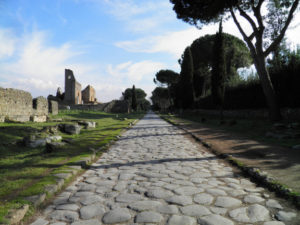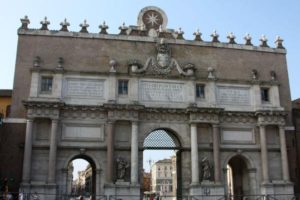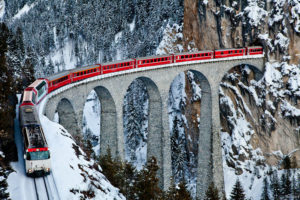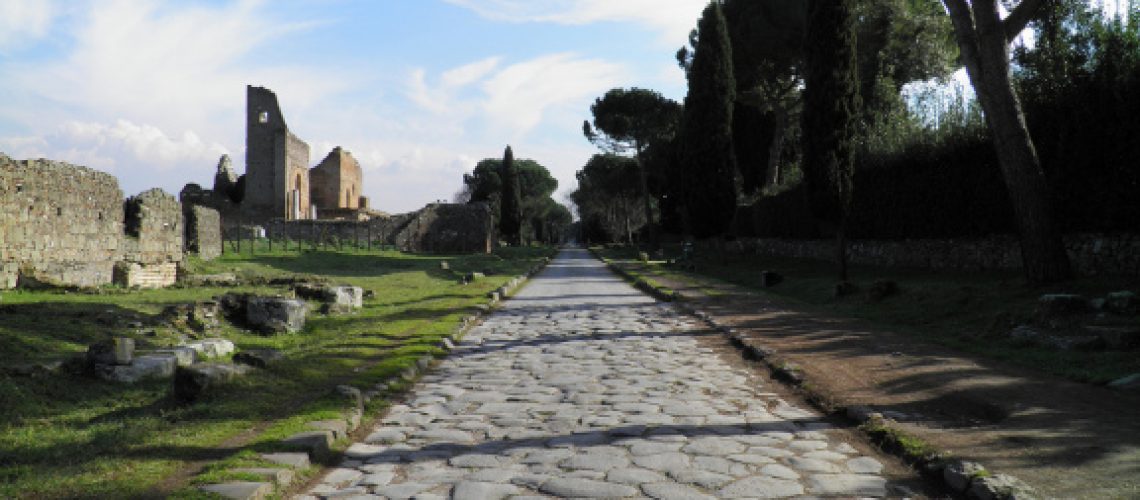 The global fascination with Roman roads is one of the many reasons why tourism is the dominant industry in Italy. The Romans were known as the bringers of civilization to the known world of their time. They did this by first conquering the tribes and nations around them, then expanded their reach by building roads, aqueducts, and military bases to hold that territory.
The global fascination with Roman roads is one of the many reasons why tourism is the dominant industry in Italy. The Romans were known as the bringers of civilization to the known world of their time. They did this by first conquering the tribes and nations around them, then expanded their reach by building roads, aqueducts, and military bases to hold that territory.
The most famous of these Roman roads is The Appian Way. Built in 312 BC during the Samnite Wars, this well-known thoroughfare was created exclusively as a travel route for Roman legions. Prior to its construction, the roads around Rome were mainly Etruscan cart paths, not sufficient for the transport of troops. The Appian Way was the first of 29 military highways built in the third Century BC and parts of it are still in use today, over 2000 years later.
All Roads Lead to Rome
 The Appian Way is one of many Roman roads that lead south, to where the Samnites were located, but the early Roman Republic had enemies all around. The Via Flaminia is a road that starts at the Porta del Popolo in the Aurelian Walls of Rome and travels north through the Tiber River Valley and over the Apennine Mountains to the Adriatic Sea. Though used mostly as a supply road to bring wheat in from the Po Valley, Via Flaminia also played a key role in times of war.
The Appian Way is one of many Roman roads that lead south, to where the Samnites were located, but the early Roman Republic had enemies all around. The Via Flaminia is a road that starts at the Porta del Popolo in the Aurelian Walls of Rome and travels north through the Tiber River Valley and over the Apennine Mountains to the Adriatic Sea. Though used mostly as a supply road to bring wheat in from the Po Valley, Via Flaminia also played a key role in times of war.
Unlike the more majestic Appian Way, the northern road fell into disuse as the years went by and very little of it remains. There is one span of the mighty Ponte d”Augusto left in Narni, a city in Umbria, and the remains of other bridges can be seen sporadically along the route, but other than that you’re unlikely to see a paved section longer than 800 meters. If you’re looking for an “off the beaten path” tour of Italy, try following the ancient route and visiting different cities along the way.
Ancient Roads and Modern Railways
 Remnants of Roman roads and ancient aqueducts can be seen throughout the countryside in Italy. If you’re looking for a good way to view them from a comfortable venue, try riding one of the many trains that cross the nation from end to end. A three-day Eurail pass will cost you just over $150 and an eight-day pass is under $300. There’s no better way to see the sights and not have to worry about parking or getting lost on the way to your destination.
Remnants of Roman roads and ancient aqueducts can be seen throughout the countryside in Italy. If you’re looking for a good way to view them from a comfortable venue, try riding one of the many trains that cross the nation from end to end. A three-day Eurail pass will cost you just over $150 and an eight-day pass is under $300. There’s no better way to see the sights and not have to worry about parking or getting lost on the way to your destination.
For a truly spectacular train ride, try the Bernina Train and Saint Moritz package we offer at Weekend in Italy. This unforgettable ride will take you on the highest mountain railway route in the Alps, through Tirano, and into St. Moritz in Switzerland. Along the way you’ll view breathtaking alpine landscapes, go over curved viaducts, and burrow through winding tunnels. The departure point is Foro Bonaparte in Milan and the journey is out of this world.

